#tok pisin
Note
My apologies, what I meant is that most of your languages are made for fantastic, fantasy worlds, as opposed to a fictional culture on Earth. If you're creating a language for a culture set on Earth, you'd probably incorporate features that tie it to a real language, am I correct?
I think you still may be misunderstanding what the key questions are and how they factor into language creation. There are two questions:
Is this language supposed to be descended from an existing language (or set of languages) on Earth?
Is this language spoken by creatures that are identical to humans in all the ways that play a crucial role in language use, comprehensijon, and transmission?
These are the only relevant questions. Notice I didn't say anything about where the languages are spoken. That bit is irrelevant. Language has its own geography and it's the only geography that matters when it comes to a posteriori language construction.
For example, looking at Dothraki, the answer to (1) is no, and the answer to (2) is yes. For that reason, Dothraki should be a language that looks entirely ordinary, in terms of how it stacks up with languages spoken currently on Earth, but its vocabulary and grammar shouldn't be directly related to any language on the planet. How could it be, if our planet doesn't exist in that universe? But since Dothraki are completely ordinary human beings their language should be a compeltely ordinary human language.
If you look at the aliens District 9, the answers to both (1) and (2) are no, despite the fact that the movie takes place in South Africa. And, in fact, you see some very interesting linguistic phenomena in that movie, where you have two species that understand but cannot use each other's languages. Its setting, though, doesn't mean that the alien language should be influenced by Afrikaans in any important way, though. It may have "borrowings", but even those would be strange (calques, most likely), since the aliens can't actually make human sounds—the same way the humans wouldn't have "borrowings" from the alien language.
On the other hand, if you look at Trigedasleng, the answers to both (1) and (2) are yes. But the suggestion you seem to be making is that I might kind of haphazardly "borrow" features from an existing language into a language that I'm nevertheless creating from scratch. That wouldn't make sense. Trigedasleng is simply an evolved form of American English with some specific constraints (some quite unrealistic, due to the scifi setting) placed on the evolution. I didn't "incorporate" features from American English: it IS American English, through and through, evolved in a way that makes sense for the setting.
There are certainly a posteriori conlangs where the creator approaches the creation of the language by saying, "I took the initial consonant mutation of Irish and combined it with the triconsonantal root system of Arabic and added the Turkish plural suffix (with vowel harmony) and added the accusative from Esperanto", and the like. This is one of the hallmarks of an amateur conlanger. Not even a creole language in the real world does this. Creole languages draw influences from many different languages, but the resulting system can't be divided up neatly into different linguistic sources. Furthermore, the result is a coherent system that doesn't look like any of the sources. Tok Pisin gets a lot of its vocabulary and grammar from English, but also gets vocabulary from German and other languages that were native to the region. When listening to the language, though, it's not like it sounds like English, then it suddenly sounds like German for a word, then it sounds like a Papuan language, then back to English: the whole thing sounds like Tok Pisin. It's a seamless, coherent system—just like any language, since all languages on Earth have borrowings and features from other languages.
Also, minor nitpick: "real" language doesn't make sense. We say natural language vs. constructed languages. Both are equally real, in that neither has any kind of material existence. A constructed language is a real language with a fake history.
Does this make sense?
56 notes
·
View notes
Text
Round one: Bikpela vs Oachkatzlschwoaf
(poll at the end)
Bikpela (Tok Pisin)
No IPA found
Translation: Big, master or lord
Tok Pisin is an English-based creole spoken in Papua New Guinea (the country, not the entire island) by 4 122 000 people out of 9 119 000 inhabitants. It is used as a lingua franca, since the island of New Guinea is well known for its many and small languages (852 of them, not including surrounding islands!!!). The lingua franca status becomes clear when regarding the fact that four million of its speakers speak it as a second language. It has a similar origin to Bislama, as they are related.
Motivation: In Tok Pisin they use the suffix -pela (which originally derives from the word fellow), to make adjectives. So bikpela is literally big-fellow. It also is the word used in the Tok Pisin bible to refer to "the Lord”.
Oachkatzlschwoaf (Bavarian) länk tyska
[ˈoa̯xkat͡sl̩ˌʃwoa̯f]
Translation: Squirrel tail (literally: oak kitten tail)
Bavarian is an Indo-European language belonging to the Germanic branch. It's spoken by around 14 500 000 people in Austria. It is part of the Continental West Germanic dialect continuum, usually considered an Austrian dialect of German but mutually unintelligible and thus a separate language.
Motivation: It's fun to look at and it's fun to say. Often used to confuse speakers of other German dialects as it is completely incomprehensible to them.
25 notes
·
View notes
Text
The Pronouns of Tok Pisin:
There's this wonderful language I recently became aware of called Tok Pisin, which is a creole language with English elements spoken in Papua New Guinea. It has a very interesting pronoun system that I absolutely adore.
Firstly, Tok Pisin doesn't differentiate between subject (I, we, he, she, etc.) and object (me, us, him, her, etc.). So, I and me are both mi, for example.
Secondly, Tok Pisin forms both its possessive adjective (my, our, his, her, etc.) and its possessive noun (mine, yours, his, hers, etc.) by preceding the base pronoun with bilong. So, my and mine are both bilong mi, for example.
Thirdly - and this is probably my favorite feature - Tok Pisin doesn't mark gender or animacy in its 3rd person pronouns: em is he/him, she/her, it, and singular they/them.
Fourthly, Tok Pisin has a dual, trial, and plural system. For example, yu is singular you, yutupela is you two, yutripela is you three, and yupela is you all.
Fifthly, Tok Pisin has an inclusive and exclusive distinction in its dual, trial, and plural 1st person pronouns: mitupela, mitripela, and mipela are the exclusive we/us, and yumitupela, yumitripela, and yumipela are the inclusive we/us.
I have no words to describe how much I love this system. It makes so much logical sense and is so easy to learn.
Here's the full pronoun declension system of 1st person, 2nd person, and 3rd person pronouns in Tok Pisin:
1st person singular: mi
1st person dual (ex.): mitupela
1st person trial (ex.): mitripela
1st person plural (ex.): mipela
1st person dual (in.): yumitupela
1st person trial (in.): yumitripela
1st person plural (in.): yumipela
2nd person singular: yu
2nd person dual: yutupela
2nd person trial: yutripela
2nd person plural: yupela
3rd person singular: em
3rd person dual: tupela
3rd person trial: tripela
3rd person plural: ol
The 3rd person pronouns are a bit different. Rather than adding -tupela, -tripela, and -pela to em, the dual and trial are simply tupela and tripela, while the plural is simply ol.
Also, note that the inclusive we/us is literally yu and mi combined, which makes a lot of sense, because the inclusive we/us basically just means you and I, you and me, etc.
13 notes
·
View notes
Text

Patreon
#studyblr#langblr#languages#tok pisin#tok pisin language#tok pisin langblr#tok pisin studyblr#new guinea#papau new guinea#new guinea pidgin#pidgin languages#new guinea pidgin language#tok pisin flashcards#tok pisin flash cards#learning tok pisin#learn tok pisin#learning new guinea pidgin#pidgin language learning#language flashcards#creole languages#melanesian pidgin#tok pisin vocab#tok pisin vocabulary#vocab#vocabulary#linguistics
3 notes
·
View notes
Text
What I'm Doing On My Blog
I'm planning on doing a couple of things with my blog.
Language Journals
Dance Progress
Life Notes
Info Dumps
Cooking Knowledge
Language Journals
I am currently learning Korean and Chinese. I am also re-learning Japanese, Tok Pisin, and Spanish after not using them for a while. On here I'm going to be writing journal entries in each language, posting my vocabulary and grammar notes, and anything else related to my language learning. If you speak any of these languages please interact and correct me if I use something wrong or if there's a better way to say something. I'm open to feedback and would love to have a conversation and make new language friends :).
Dance Progress
My goal for the rest of the year is to learn at least the chorus of a song per day. I have a list of songs I want to learn. I have numbered them and will be using a random number generator to choose which dance to learn that day. I will be posting the list and an entry about each dance I learn (possibly with a video of me doing the dance ;))
Life Notes
This is where I will be posting bullet journal style entries, lessons I've learnt, and photos from my day. Basically like a digital bullet journal. Maybe with drawings.
Info Dumps
Anything I've hyperfocused on I've decided to put my research on here instead of google drive. This can be anything from random topics I research, to whatever series of things I've rabbit holed to draw, to things I've crocheted or designed. Just a digital diary of my hobbies and hyperfixations.
Cooking Knowledge
Cooking is a big thing in my family. My dad has read tons of recipes and cooking books and has committed the information to memory, now he doesn't really uses recipes (only uses them as a base idea of flavours and ingredients if he's unfamiliar) and measures with the spirit of the ancestors. This is the way I've been taught to cook since I was little. Now that I'm an adult and am cooking a lot more I am testing out my skills and figuring things out for myself and creating my own brain cooking book. To help me keep track of everything I'm going to be writing down my recipes, my notes on different dishes and ingredients. My mum can't eat too much garlic and onion, I can't eat shellfish, tomato, and eggplant so I also have to figure out how to make things to suit that. I'll also be writing any techniques I've learnt.
That's my plan for this blog. Obviously there will be some random stuff but I'll try to fit it into one of these categories. Thank You for reading. I love messages and suggestions about new things to try so feel free to message me :)
Have a great day! <33333
#cooking#recipe book#bullet journal#bujo#dance#kpop#korean#chinese#spanish#japanese#tok pisin#polyglot#language learning#journals#language journal#life journal#kpop dance#idol trainee#introduction#info dumps#hyperfixation#hyperfocus#info dump
11 notes
·
View notes
Text
from mikjikj-mnikuk/turtle island to inuit nunangat to kanata to kalaallit nunaat to anahuac to abya yala to alkebulan to the levant to moananuiākea to sápmi to éire to bhārata to zhōngguó to nihon to aynu mosir to siberia to niugini to nusantara to bandaiyan to aotearoa, from coast to coast to coast to coast, from sea to sea to sea to sea, none of us are free until all of us — men, women, enben, children, queer people, disabled & neurodivergent people, elders, animals and the land and the sea and the sky — are free!!!!
#arcana.txt#turtle island = north america aka canada america & mexico (& the carribean & central america & greenland depending on who you ask)#inuit nunangat = the arctic aka inuit territory#anahuac = the traditional name for mexico#abya yala = south america (& the carribean & central america depending on who you ask)#alkebulan = the indigenous name for africa#levant = the place where israel & palestine are but also includes cyprus jordan lebanon & syria#moananuiākea = the hawaiian word for the pacific ocean & all the pacific islands#sápmi = the traditional land of the sámi in the northern parts of scandinavia & sweden norway finland & russia#bandaiyan = the indigenous word for australia / aotearoa = the māori word for new zealand#& the reason why i& included animals & the land sea & sky was bc that's central to indigenous activism just as much as it relates to humans#ya can't just free the humans ya gotta free the lands seas & skies too!!#btw mikjikj-mnikuk means turtle island in mi'kmawi'simk i& found it fitting to use the oldest language that yt europeans heard when arrivin#as the mi'kmaq were literally the first indigenous peoples that yt settlers spoke to & saw in 'canada' aka kanata which is the actual word+#which it originated from which came from a huron-iroquois word!!#+ zhōngguó is the chinese word for china ! i& included it bc the uighurs & tibetans & other idigenous peoples are still struggling there!!#+ nihon is the word for japan & i& added it bc we can't forget the ainu & okinawans !!#kalaallit nunaat = greenland & éire = ireland in gaeilge#niugini = new guinea in tok pisin / nusantara = indonesia & the archipelago from old javanese bc they have a lot of indigenous peoples#bhārata = india — i& added it bc there's a LOT of indigenous peoples there & the caste system often has them at the bottom#aynu mosir = ainu homelands !!#siberia also has MANY indigenous peoples living in literally the coldest parts of the world & they're going thru a lot rn#nobody's free until all of us are free!!!!#protect indigenous peoples everywhere!!!! protect each other!!!!#protect the lands seas & skies & also keep them centered in your activism while making sure human rights are valued!!#land back#activism.#psa.#** post; okay to reblog.
19 notes
·
View notes
Text
I love that moment when you're bored, but you're also tired enough that logical methods of relieving it don't occur to you.
So you scroll through a new site and go "I'm still bored. [Scroll scroll] ah, I see this news site does news in Tok Pisin as well. I shall read the Tok Pisin news."
Gentle reader: I can't read Tok Pisin.
#premium original content#for context tok pisin is one of the major languages of papua new guinea#and it's a creole with a fair chunk of English in it#so i can ''''read'''' it#but i can't read it the sense of 'confidently getting the meaning and getting it right too'
2 notes
·
View notes
Text
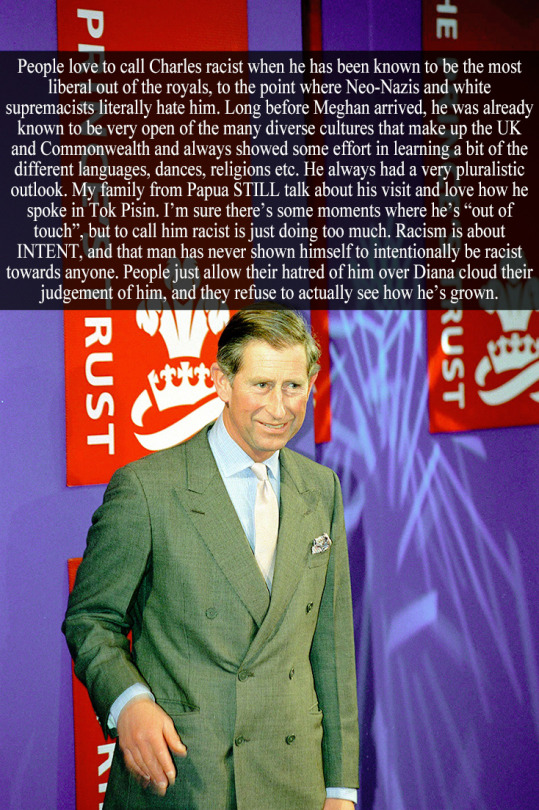
“People love to call Charles racist when he has been known to be the most liberal out of the royals, to the point where Neo-Nazis and white supremacists literally hate him. Long before Meghan arrived, he was already known to be very open of the many diverse cultures that make up the UK and Commonwealth and always showed some effort in learning a bit of the different languages, dances, religions etc. He always had a very pluralistic outlook. My family from Papua STILL talk about his visit and love how he spoke in Tok Pisin. I’m sure there’s some moments where he’s “out of touch”, but to call him racist is just doing too much. Racism is about INTENT, and that man has never shown himself to intentionally be racist towards anyone. People just allow their hatred of him over Diana cloud their judgement of him, and they refuse to actually see how he’s grown.” - Submitted by Anonymous
115 notes
·
View notes
Text

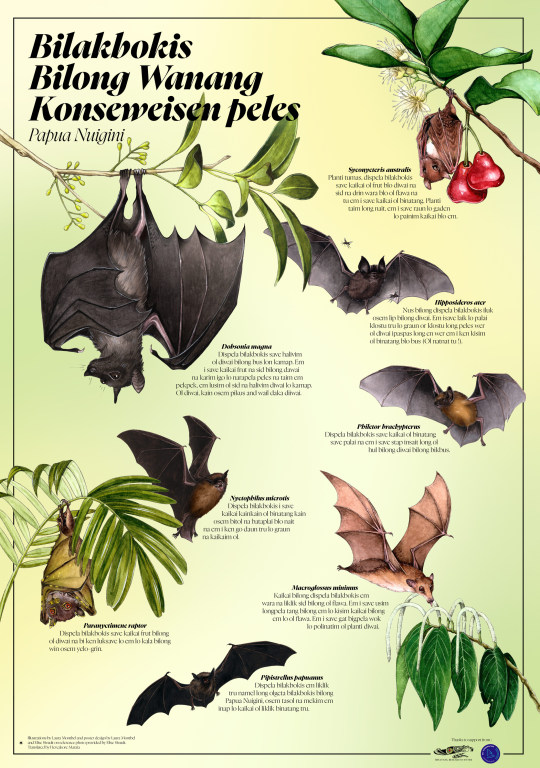
Super happy - My bat posters made it to Fonts in use !
As a graphic designer, i treasure this website and its amazing graphics, so i'm excited to have my work featured on it ✶
It's great to have these under documented bats shared around too - even if it's to type lovers ;-)
Not only that, but it's also the first submission in Tok Pisin, a widely used language of Papua New Guinea.

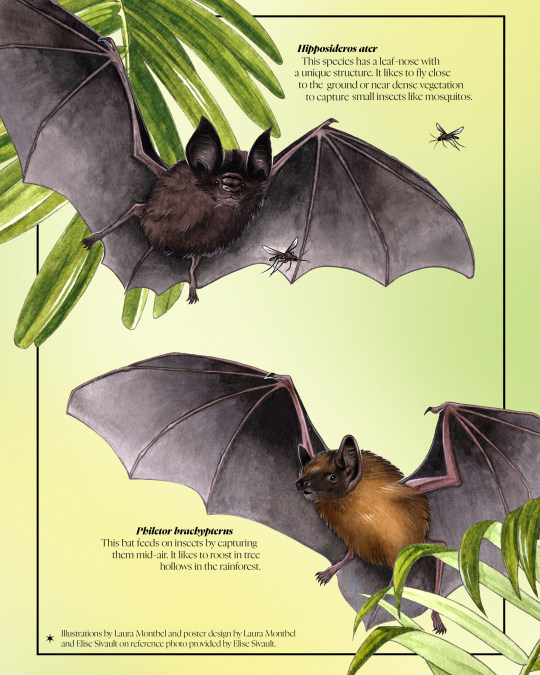
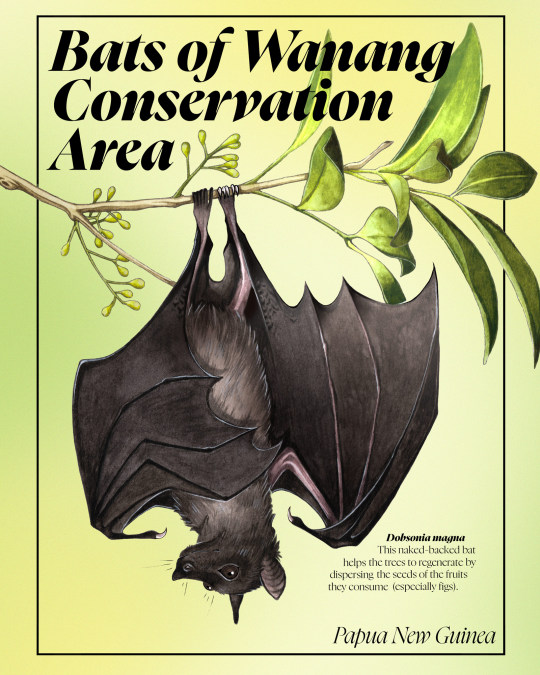
Finally, It also is the first use of Nyght Serif submitted to the site - Nyght Serif is a stunning font by Maksym Kobusan, and it was used in different styles throughout the poster.
Unique yet easy to read, its dark italic style has shapes not that far off from the curves of bat wings... it was the perfect candidate for this project !

If you like beautifully drawn letters, Tunera Type is an awesome foundry full of unique fonts - all free for personal & commercial use.
#bats#botanical art#bat conservation#it's right on the front page too; oh my!!#from a Phd student in czechia to a graphic designer in france; using type from an ukrainian designer -#all to create a poster for bat conservation in papua new guinea. Isn't the internet fantastic sometimes ?#fontinuse#fonts in use#typography#fonts#free fonts
24 notes
·
View notes
Text
I love you Afrikaans
I love you Krio
I love you Morisyen
I love you Tok Pisin
I love you Kreyòl
I love you Gullah
I love you Papamiento
I love you Patois
I love creole languages <3
11 notes
·
View notes
Text
Results of the preliminary sorting!
I have gone through the submission form and chosen which words will compete based on the principles in the original post so I thought I'd present you with some data as a teaser:
There are words from 35 languages!
21 of the languages have only one word submitted and five languages have four words each.
These are the languages for anyone interested: ASL, Bavarian/Austrian dialects of German, Belarusian, Bislama, Brazilian Portugese, Czech, Danish, Dutch, Finnish, French, German, Haitian creole, Hebrew, Irish Gaelic, Japanese, Kaqchikel Mayan, Korean, LIBRAS (brazilian sign language), Lithuanian, Luxembourgish, Mandarin Chinese, Mbabaram, Old Church Slavonic, Polish, Russian, Sanskrit, siSwati, Spanish, Swedish, Swiss German, Tagalog, Tok Pisin, Urdu, Walloon French and Yiddish
So as expected many european languages, but still lots of variation. Good luck to all words!
39 notes
·
View notes
Text
I asked Google Bard to give me a specific situation in which a creole betwen Chinese, Korean, and English might form. So far, so good:

BUT THEN
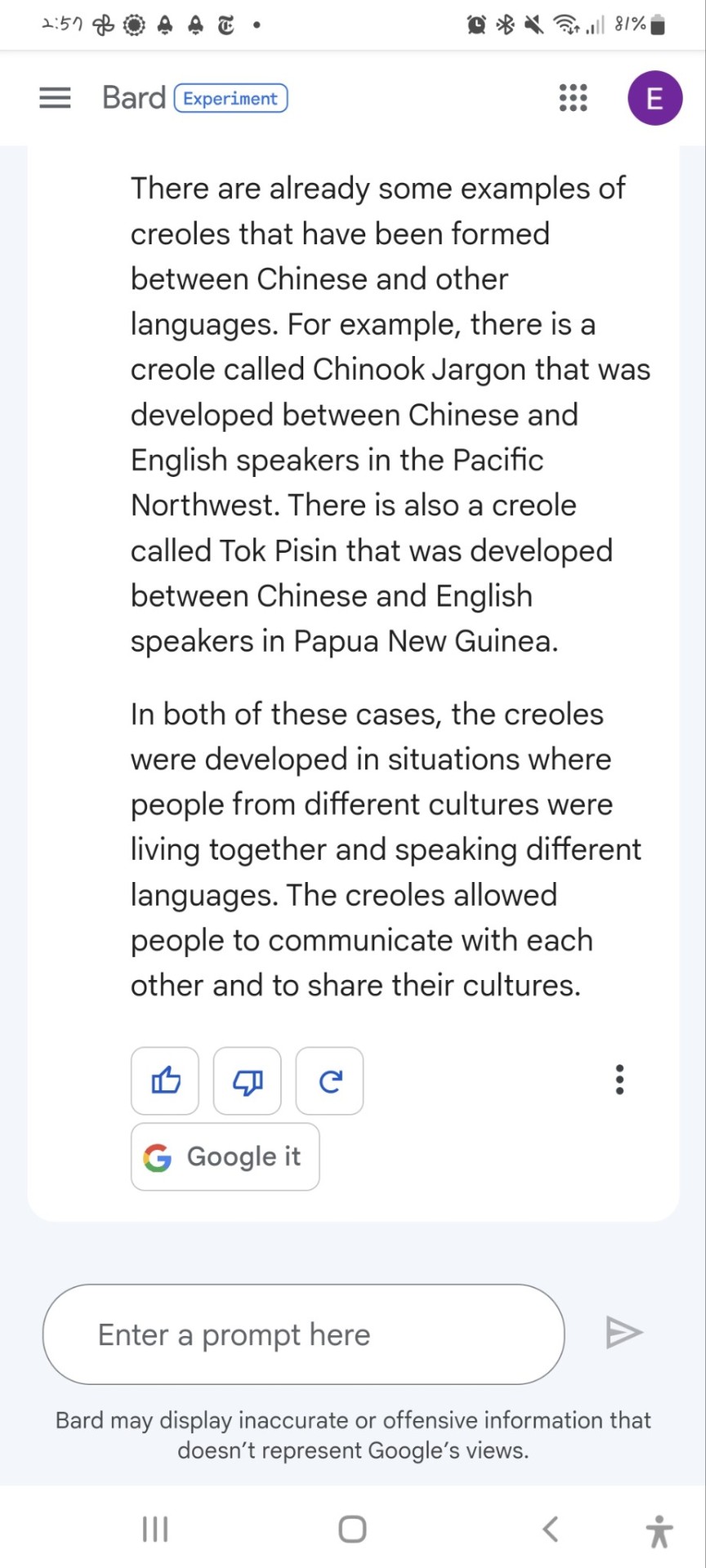
LIES
Chinook Jargon is a creole formed mainly between the Chinook language and French, with some words from English and various indigenous languages of the Pacific Northwest
Tok Pisin is a creole formed between various Melanesian languages, English, German, Malay, and Portuguese
Neither of these have significant Chinese influences so ???
30 notes
·
View notes
Text

Patreon
#studyblr#langblr#languages#tok pisin#tok pisin language#tok pisin langblr#tok pisin studyblr#new guinea#papau new guinea#new guinea pidgin#pidgin languages#new guinea pidgin language#tok pisin flashcards#tok pisin flash cards#learning tok pisin#learn tok pisin#learning new guinea pidgin#pidgin language learning#language flashcards#creole languages#melanesian pidgin#tok pisin vocab#tok pisin vocabulary#vocab#vocabulary#linguistics
2 notes
·
View notes
Text
Kinda spitballing a hypothesis here based off of an I once saw somewhere in the conlanging corner of the internet (I think it was on an episode of Conlangery talking about extremely regular philosophical languages? @gacorley might remember), but I've got an idea about lexical structure, because it seems to me like there's two opposing trends in Language when it comes to semantic fields.
On the one hand, from the perspective of acquisition and to some extent production it's nice to have words that are derivationally related to each other, both because it makes it possible to 'work out' the meaning of the word even in the absence of actual real-world context and because new words can easily be coined to fill lacunae in vocabulary. 'My father is a weaver; What does he do for a living? He weaves' kinda stuff.
But on the other hand, from the perspective of perception you don't really want words that sound similar to each other, particularly in the same semantic field, because when you're talking about those topics, well, if everything sounds similar (especially in a noisy environment where you might not be able to hear entirely clearly) then you're going to start to get confused very quickly. 'Judges judge what judgements are just' sort of thing (see also 'oligosynthesis'), as well as of course 'Acronym and Abbreviation Overload' type phenomena (after all, there's only 26 possible syllables in an acronym...).
I think the fact that languages will vary between favouring one over the other does likely have impacts on learnability. The effect is not going to be major in comparison to other things, but there's unlikely to be nothing there.
For instance, obviously for a speaker of a language that makes a lot of use of derivation (Russian, say), English must be made harder to learn by the number of separate roots needed (like we have entirely different roots for the meat of domestic animals for pity's sake!).
But at the same time, for me, a native speaker of English, part of the irritation of learning Russian is that nobody is there teaching you the derivational morphology that enables you to make a guess at the approximate meaning of расследование from identifying the root (след 'trail') and building up from there (verbaliser -ова-, prepositional prefix рас- and adjectivaliser/abstract nominaliser -ние; the end result means 'investigation'), nor am I really that used to making use of that because in English you so often can't.
I'll note that this is kind of similar to a proposal made in Trudgill's Sociolinguistic Typology (2011), where he points out that small sound systems like Hawai'ian can be found in isolated languages precisely because all the words start to sound the same and context (i.e. shared background information between participants, more available in smaller societies) is more necessary to disambiguate what's being said. I think what I'm proposing is kinda orthogonal to this, because both extremes are kinda difficult, and there's several kinds of factor which can influence a language's tendency in either direction (English for instance has its several layers of historically more prestigious foreign vocabulary from having spent time as the language of an underclass, while 'pidgin-adjacent' creoles are of course forced to 'make do' with limited lexical resources they have, thus giving rise to stuff like Tok Pisin gras bilong fes 'beard'), but perhaps that's something for me to write about somewhere else.
5 notes
·
View notes
Text
Languages of the world
Unserdeutsch (Falshe Deutsch/Kaputene Deutsch)
Basic facts
Number of native speakers: 110
Spoken in: Australia, Papua New Guinea
Script: Latin, 24 letters
Grammatical cases: 0
Linguistic typology: analytic, SVO
Language family: Indo-European, Classical Indo-European, Germanic, Northwest Germanic, West Germanic, High German, Upper German, Middle-Modern High German, Modern High German, Upper Franconian, Global German
Number of dialects: ?
History
Unserdeutsch is a German-based creole that originated in Papua New Guinea, which was ruled by the German Empire from 1884 to 1914, as a lingua franca. Its substrate is Tok Pisin and the majority of the lexicon comes from German.
1897 - foundation of a ‘sanctuary’ for mixed-race children who spoke Tok Pisin, where they were taught Standard German
1950s-1960s - golden age of the language, which counted 400-500 speakers at the time
1970s - Unserdeutsch is discovered by chance
1975 - Papua New Guinea gains independence, after which the linguistic community moves to Australia
Writing system and pronunciation
These are the letters that make up the script: a b c d e f g h i j k l m n o p r s t u v w y z.
Unserdeutsch’s phonemic inventory is more reduced than that of German and closer to that of Tok Pisin, as it only has five vowel phonemes and has simplified German double consonants into one single phoneme.
Grammar
Nouns are not marked for gender, number, or case, but can be pluralized by using the pronominal marker alle. Some frequently-used nouns retain German plural forms and are thus double-marked for plural.
There is a hybrid system of personal pronouns in which only certain persons have retained distinct object forms, unlike in German.
Verbs are conjugated for tense and aspect. However, tense marking is optional. Aspect is shown by preverbal markers. Unusually for a creole language, Unserdeutsch has a copula that is conjugated in the present tense.
Dialects
There are no formal dialectal distinctions, but there is considerable variation between speakers.
12 notes
·
View notes
Text
Experiments

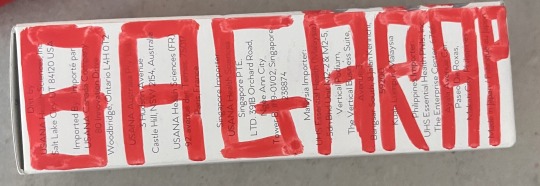

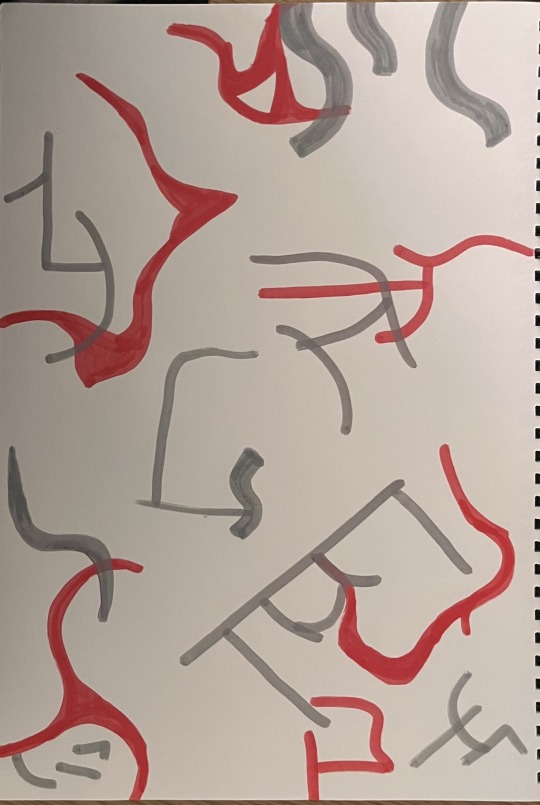
played around with text on an everyday material like a little box for a product
incorporated tok pisin
i really enjoyed the gestural work, it kind of makes my eyes wonder throughout the page
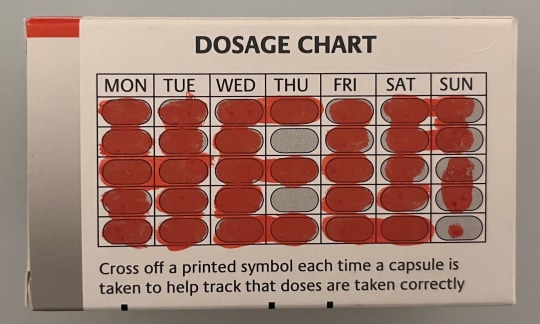

Best in my opinion
5x8cm
wanted to see what text could look like without actually typing or writing onto the material
opted to colour in the bubbles to create letters
experimenting with text that comes to mind as soon as the creative process begins -> expand on this in other works
0 notes